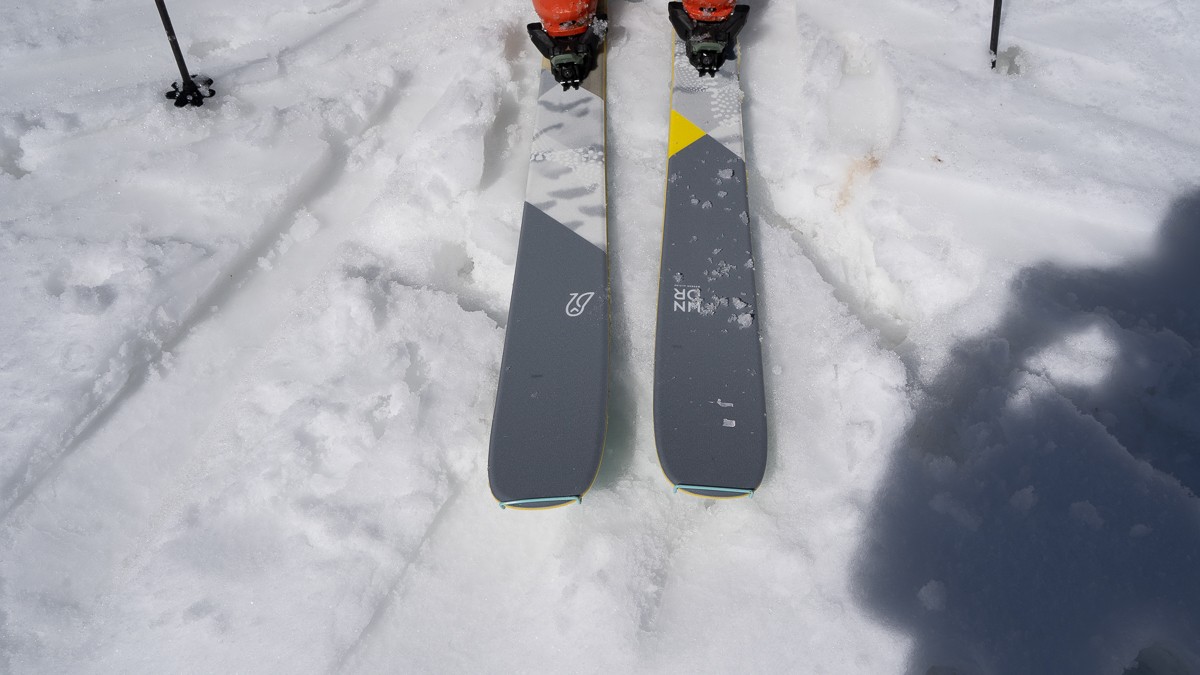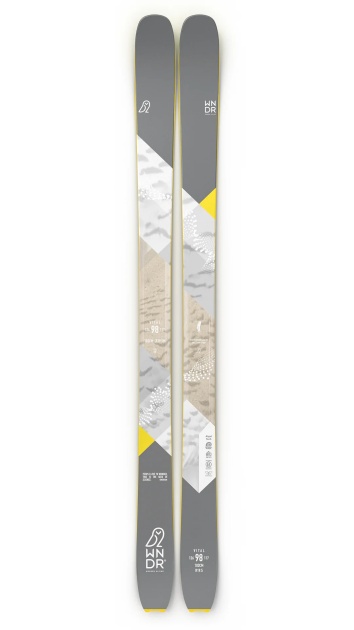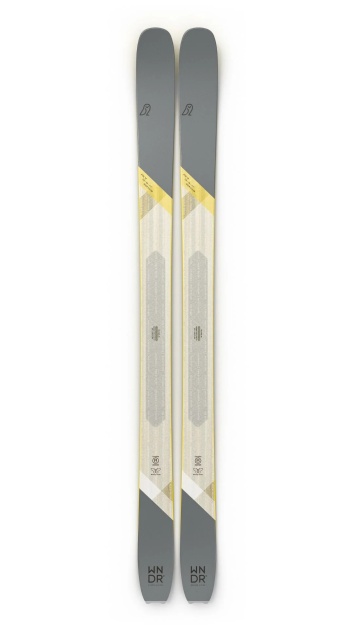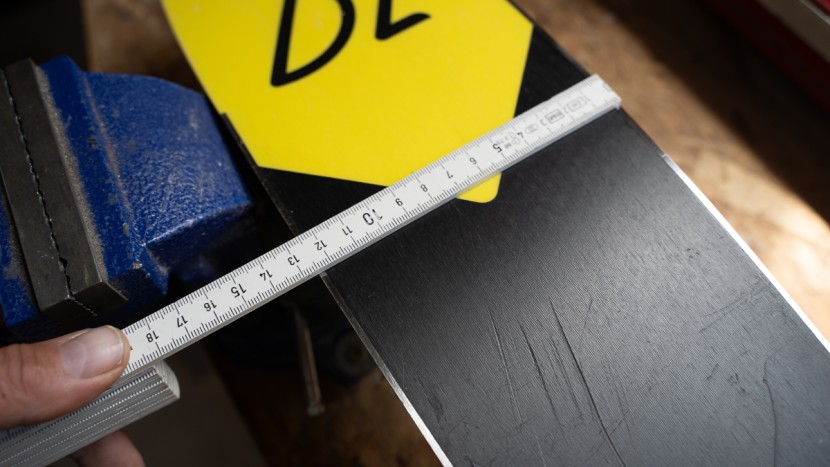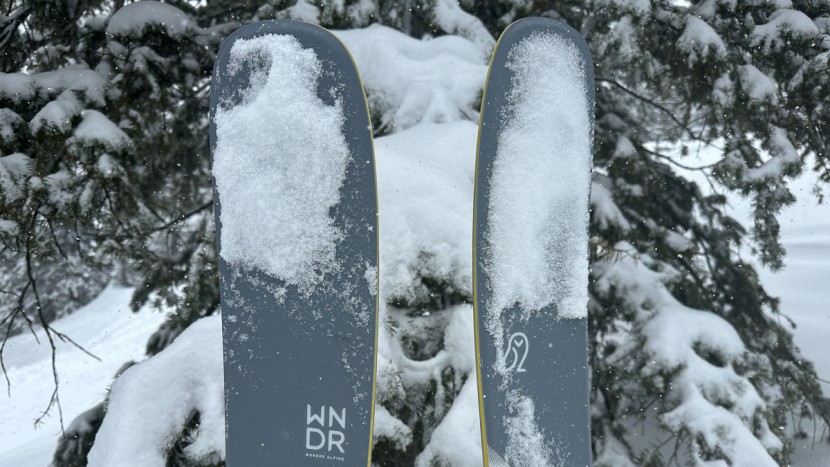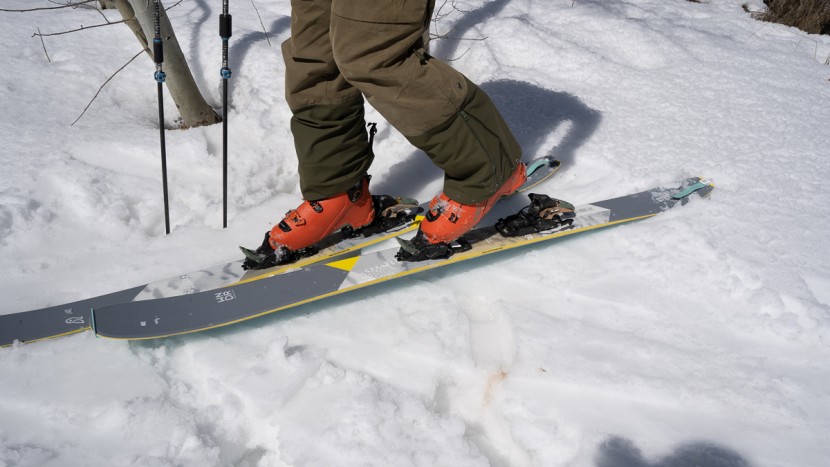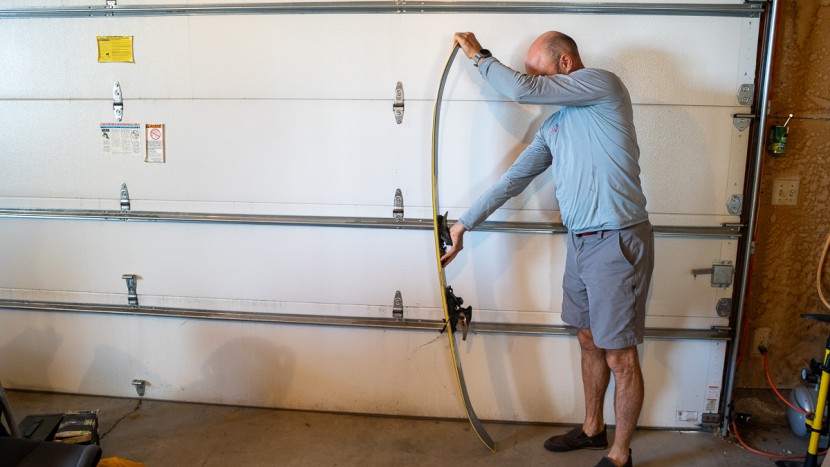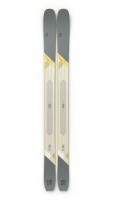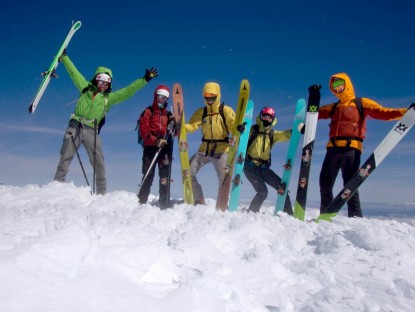WNDR Alpine Vital 98 Camber Review

Our Verdict
Our Analysis and Test Results
New Graphics for 2024-2025
Savvy readers will notice that the model we tested for our review is slightly different from the model we are linking you to purchase. We chose to test the 2023-2024 Vital 98 Camber (left) because when we bought them, the newest graphics for 2024-2025 (right) were not yet available to purchase in a production model. We're linking to the in-line model, but we've been assured by the kind folks at WNDR that, besides the updated graphics, these skis are the same.
The WNDR Alpine Vital 98 is available in both a camber profile – which is the one we tested – and a reverse-camber profile. The Vital 98 Camber is a well-built, resort-oriented, all-mountain ski targeted and marketed to backcountry skiers. If your regular touring routes or skiing style justify the weight, these will be very enjoyable on the downhill portion of your tip. However, we want to point out that other skis will go downhill nearly as well at a much lower weight, especially considering the waist width of the Vital 98.
Weight
The pair of Vital 98s we tested, in a 177 cm length, weighed 1785 grams per ski on our calibrated scale. This equates to 3570 grams, or 7.9 pounds for the pair, which puts them near the top of our weight ratings in absolute terms. However, when we consider that any other skis that weigh relatively similarly are 8-9 mm wider underfoot, it's easy to argue that these are heavy backcountry skis. If your aim is to optimize downhill performance, there are more versatile skis in our lineup that perform better across the board, and offer a boost in waist width to make for a more enjoyable powder ski.
Firm Snow
We like the Vital 98 on all flavors of firm snow. Whether corn, ice, wind board, or even groomed snow, these skis are more like resort-focused all-mountain skis than practically any other ski in our lineup. The edge grip is strong, reliable, and remarkably centered – not once did we hook a tail or tip on these skis. Even though the Vital 98 is relatively soft longitudinally, the torsional stiffness is on par with other freeride-oriented skis, which makes a huge difference on firm snow.
Powder
We have to confess that most members of our test team couldn't justify expending the excess energy to lug these skis up the mountain for the best powder days of our season. That admission aside, we still skied plenty of powder on these and thoroughly enjoyed the turns we did hunt down. With dimensions similar to other skis we tested in the 98 mm range, the Vital 98 is predictable, though the high-rise tip rocker certainly helps improve their performance a touch in deep snow.
Crud and Poor Snow
These skis excel at tough skiing, especially when that tough snow is on the firmer side. They pop up out of shallow breakable crusts, track predictably through mashed potatoes, and readily plow through otherwise hard-to-handle conditions with stability and confidence. We specify shallow breakable crusts because one of our testers, on one occasion, was caught up in some pretty deep snow that was capped with a thicker breakable crust. We hoped that the mass behind the Vital 98 would help it pop up through this stubborn crust a bit better, but to its benefit, these are difficult conditions for any ski. We're confident that only wider skis of the same mass would have been able to better handle those conditions.
Stability at Speed
In our comparative hand flex tests, the Vital 98 is pretty soft longitudinally. Traditional convention holds that a softer ski like this would falter with speed. Yet, it was incredibly stable, easily arching turns at higher speeds – it's got to be the weight.
Ski construction and design are complex, and this is a great example of the limitations of making generalizations about overall performance before you actually have the chance to ski the ski. Downhill performance, especially at higher speeds, is a function of weight, geometry, stiffness, material, and the particular interplay of all of these in a specialized design. Be cautious about jumping to conclusions – or buying into the conclusions that others have jumped to – about anticipated ski performance based on isolated metrics. The Vital 98 is a soft ski that's designed to ski fast.
Should You Buy the WNDR Alpine Vital 98 Camber?
We really, really try to steer skiers clear of seeking out the so-called “resort and backcountry quiver-of-one.” Skis that claim to be generally come up short in one area or the other and, ultimately, aren't worth the squeeze. However, if you live and ski in regions with regularly firm conditions – skiers in eastern California and the Northeast, tune in – the Vtial 98 should be on your shortlist. You'll pay a weight tax on the uphill, but fit skiers will reap the benefits on the downhill.
What Other Backcountry Skis Should You Consider?
The Salomon QST Echo 106 skis are quite similar to the Vital 98 in most conditions. They weigh the same, so the difference comes down to waist width – the slightly more narrow Vital 98 is better when the snow is firm, while the wider Eco 106 is quite a bit better in soft snow. Relatively heavier skis like these share a downhill skiing experience that most testers describe as “forgiving” and “stable.” The 97-millimeter Black Crows Camox Freebird also falls into this category, though it shaves more than 200 grams off each ski.
| Awards | |
|---|---|
| Price | $900 List |
Overall Score  |
|
| Star Rating | |
| Bottom Line | This relatively heavy ski should be on the shortlist for fit skiers who regularly ski in difficult conditions |
| Pros | Forgiving, stable at speed, solid on firm snow |
| Cons | Heavy for their width |
| Rating Categories | WNDR Alpine Vital 98... |
| Weight (25%) | |
| Firm Snow (20%) | |
| Powder (20%) | |
| Crud and Poor Snow (20%) | |
| Stability at Speed (15%) | |
| Specifications | WNDR Alpine Vital 98... |
| Measured Weight Per Ski (g) | 1785 |
| Measured Length Tested (cm) | 177 |
| Measured Waist Width (mm) | 98 |
| Weight Per Surface Area Ratio (g/cm²) | 0.88 |
| Measured Weight Per Pair (g) | 3570 |
| Measured Weight Per Pair (lbs) | 7.9 |
| Manufacturer Claimed Length (cm) | 177 |
| Available Lengths (cm) | 159, 165, 171, 177, 183, 189 |
| Measured Dimensions, Tip/Center/Tail (mm) | 127/98/117 |
| Manufacturer Claimed Dimensions (mm) | 126/98/117 |
| Turn Radius (m) | Not Stated |
| Construction Type | Sandwich |
| Core Material | AlgalTech and Aspen |
| Rocker/Camber Profile | Tip and tail rocker, camber underfoot |


